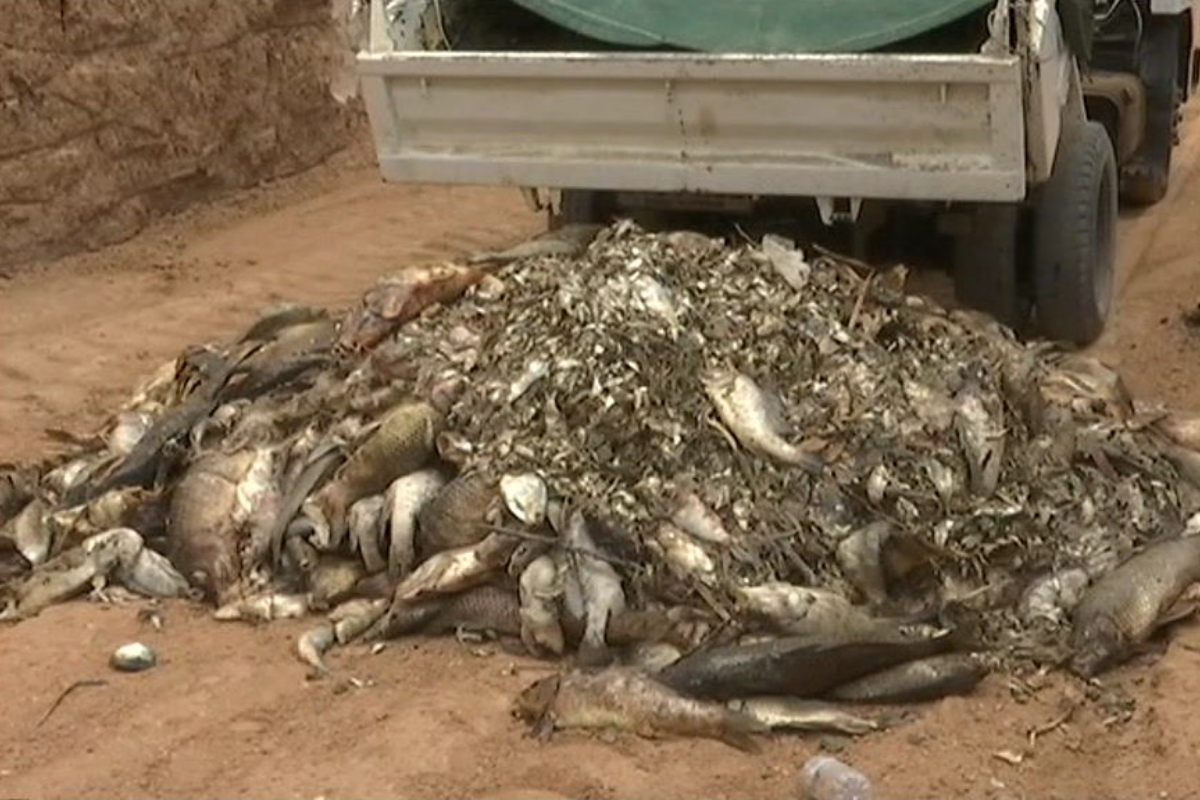- The deaths are assumed to be the result of low oxygen levels.
- An emergency hub has been set up in the town of Menindee.
- The water supply remained “high quality,” according to police.
Menindee: In Australia, a massive cleanup effort is underway after millions of fish died in a river in western New South Wales (NSW).
Police warn that while fish will be removed from “high-density areas,” it will be impossible to remove all of the carcasses.
The water supply remained “high quality,” according to police.
The deaths are assumed to be the result of low oxygen levels in the river during a recent heatwave.
An emergency hub has been set up in the town of Menindee in western NSW to coordinate the response and monitor water quality.
Describing the operation as “very challenging and significant”, NSW Police Commander Brett Greentree said the event was “unprecedented in terms of the millions of fish which have died.”
“Our purpose is making sure Menindee has clean water supply… I’m comfortable we’re in a good spot regards to water quality at the moment,” he told reporters.
Commander Greentree said contractors with specialized skills would use “a netting procedure” to remove the fish.
“But I need to be very upfront with the community and say ‘will every fish be removed?’ I don’t think so, from the information I’ve had,” he added.
Local resident Graeme Crabb commented on Facebook, “the worst is still coming,” after posting a video of rotting fish filling the riverbank.
Temperatures in the area surpassed 40 degrees Celsius (104 degrees Fahrenheit) during the weekend.
Meanwhile, volunteers from the conservation charity OzFish have launched a search and rescue effort to recover as many remaining native fish as possible from the river.
Braeden Lampard, who described the smell as “putrid,” told the Australian Broadcasting Corporation that his crew was transporting rescued fish to a holding tank.
He calculated that 85% of the dead fish were native species like Bony Bream and Golden Perch, with the remainder being non-native sorts like carp.
The majority of the floating remains, according to Cassie Price, OzFish’s director of programs, will sink to the river bed within 48 hours.
“It would be pretty unlikely to get most of [fish] biomass out of the river. It will sink down, which will cause a bit of a nutrient spike, which is not good for the water quality either,” she told the sources.
“It’s likely to cause algal blooms, which will cause more issues for a while,” she added.
According to investigators, the deaths were caused by hypoxic blackwater, a naturally occurring phenomenon that creates extremely low oxygen levels.
State government authorities stated that they were releasing higher quality water to increase dissolved oxygen levels and that they would collaborate with federal agencies to determine the root reason.
The new incident follows a major fish die-off in the same location in 2018 under similar conditions.
The Murray-Darling Basin, Australia’s largest river system, includes the Darling-Baaka River.
In recent years, its environment has been stressed by drought and excessive human use, and last year brought major floods as a result of heavy rainfall and storms.
The latest die-off was compounded by “significantly increased numbers of fish in the system” as floodwaters receded, according to authorities.
[embedpost slug=”/australia-millions-of-dead-fish-wash-up-near-menindee/”]



